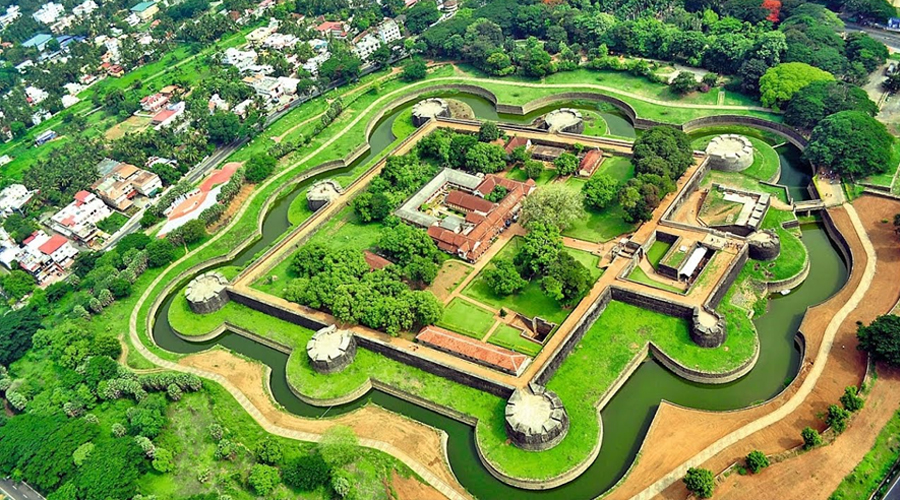Kerala, gods’ own country known for its green attractions and long beaches. However, Kerala has some must visit forts too. Here is the list of forts.
Bekal Fort, Kasaragod
One of Kerala’s largest and most breathtaking forts set against the magnificent backdrop of the Arabian Sea off Palikkara village in Kasaragod, the Bekal Fort was constructed during the reign of Sivappa Nayaka, between 1645-1660 CE.
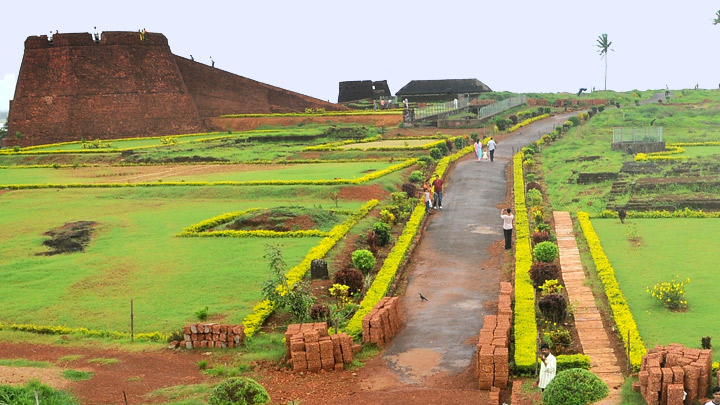
An Archaeological Survey of India excavation held at the Bekal Fort between 1997 and 2001 unearthed a cornucopia of buried treasures. Among the fascinating discoveries were various types of structural basements, coin mints, a wide range of ceramic pot shards, including porcelain ware, celadon ware, iron glazed ware, polychrome ware and more. Several antiquities such as metal and stone objects, ornaments, beads, and coins belonging to the period of the Nayakas and to that of Tipu Sultan and the English colonial period were also unearthed.
Thalassery Fort, Kannur
A heartbeat away from the Muzhappilangad beach to the west of coastal Thalassery, on an elevated laterite terrain sloping down to the serenading waters, is this magnificent 18th- century colonial fort built by British East India. Company. The verdant island of Dharmadom (near Thalassery) was a port from the early medieval period. Arab seafarers played a major role in trade here, soon attracting the Portuguese, Dutch, French, and the English. The ready availability of spices from Wayanad was a key attraction.
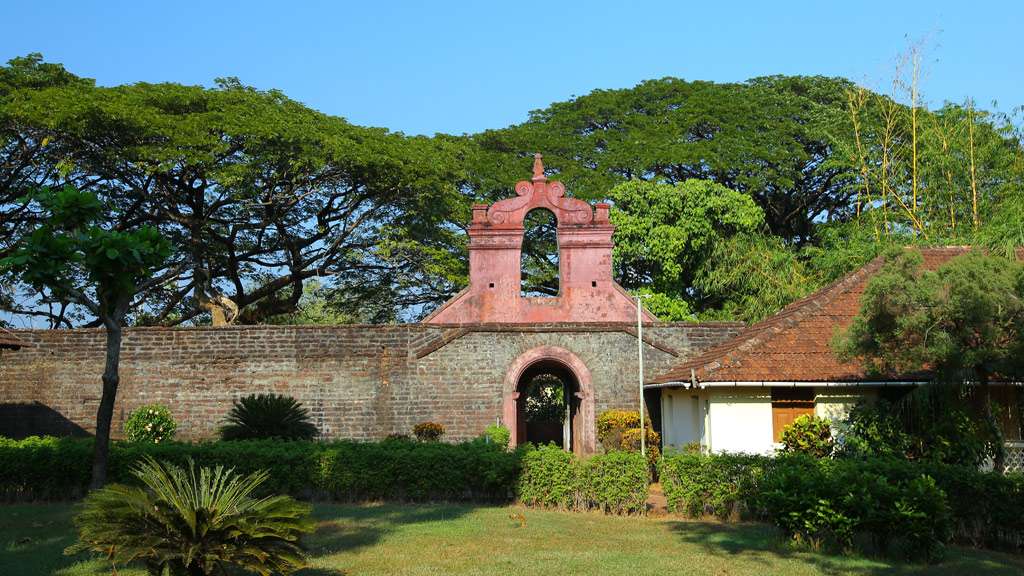
The Portuguese and the Dutch soon set up factories. The French obtained land from the king of Kolathiri (Chirakkal) to construct a factory and a mud fort. The English, too, were eager. Eventually, when the French decided to fortify Mahe, they abandoned Thalassery. The English then approached the Kolathiri for permission and occupied the fort immediately. After a few years, they received permission from Surat and rebuilt the fort in 1708 CE.
St. Angelo Fort, Kannur
The majestic Fort St. Angelo perched on a rocky promontory off the Mappila Bay west of Kannur in the cantonment area embraced by the Arabian Sea, stands as a living testimony to the town’s prominence in history as a critical port town and trade centre from the early medieval period. Gripping narratives abound linked to the rise and fall of successive colonial powers who have staked claim to this grand bastion over the centuries. The Portuguese first arrived in Kannur for trade in 1498 CE upon the invitation of the Kolathiri Raja. In 1502 CE, the Raja granted them permission for a factory at Kannur, and a fort for its protection. Named St. Angelo, the fort was completed in 1505 CE. But soon, the local traders began to object to the new Portuguese policy of issuing passes for trading in the Arabian Sea. Gradually. the growing local unrest developed into a war against the Portuguese, under the leadership of the Kolathiri, assisted by the Samuthiri and other local rulers.
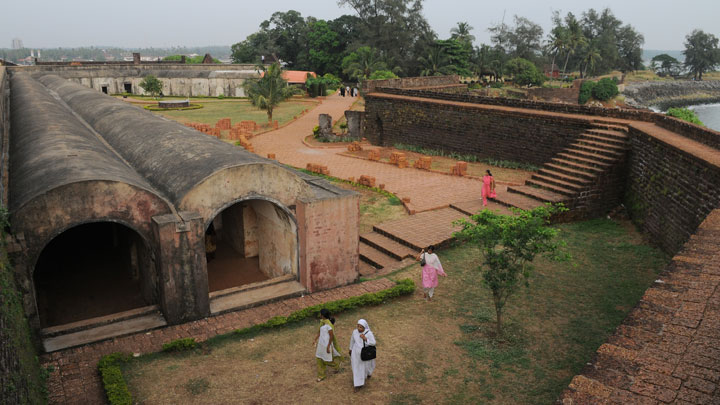
Today, the fort is replete with parks, amenities, and charming seating nooks It is as though each stone at the fort has witnessed an indelible series of historical milestones – the siege by the local rulers when the inmates were compelled to eat rats and cockroaches; bloodshed during the fort’s capture by the Dutch in 1663 CE and when it was sold in 1771 CE to All Raja; and yet again, when it was captured by the English and transformed into a veritable mise-en-scene of torture during the freedom struggle. On the midnight of August 15, 1947, the Union Jack was lowered, and the national flag of India hoisted atop the glorious Fort St. Angelo, that to this day commands a breathtaking diorama of the Arabian Sea.
Tipu Sultan’s Fort, Kozhikode
Tipu Sultan, the renowned successor and eldest progeny of Haider Ali Khan, the erstwhile ruler of Mysore, continued the policies of his father, and undertook various measures to consolidate the Malabar region.
The Paramukku hillock where Tipu Sultan’s Fort is situated, is referred to in revenue records as Kottasthalam. It is widely believed that a tunnel linked the fort to the River Chaliyar. Following the Treaty of Seringapatam of 1792 CE, Tipu Sultan is finally believed to have surrendered the fort to English East India Company, along with a few other territories he possessed at the time in Malabar.

When Tipu Sultan, the ruler of the Kingdom of Mysore, attacked Travancore, an ally of the British East India Company, a war broke out in late 1789 CE. After nearly two years of fighting, the forces of East India Company, led by Lord Charles, the 2nd Earl Cornwallis, along with the allied forces of the Maratha Empire and Hyderabad, laid siege in February 1792 to Mysore’s capital Seringapatam (aka Srirangapatna). Rather than prolonging the war at great cost to all sides, Cornwallis entered into negotiations with the Sultan to end the conflict peacefully. The resulting pact known as Treaty of Seringapatam’ was signed on 18th March 1792.
Palakkad Fort, Palakkad
Nestled in the heart of Palakkad on a fertile land accessible via the ‘Palakkad Gap’ (a low pass in the Sahya mountains of the Western Ghats) from Tamil Nadu, the Palakkad Fort was constructed on the behest of Haider Ali Khan, by invitation of the ruler of Palakkattussery (Palakkad) to intervene in his dispute with the Samuthiri of Kozhikode. Constructed at an elevation to keep vigil over the disputed area, the fort was completed in 1766 CE.
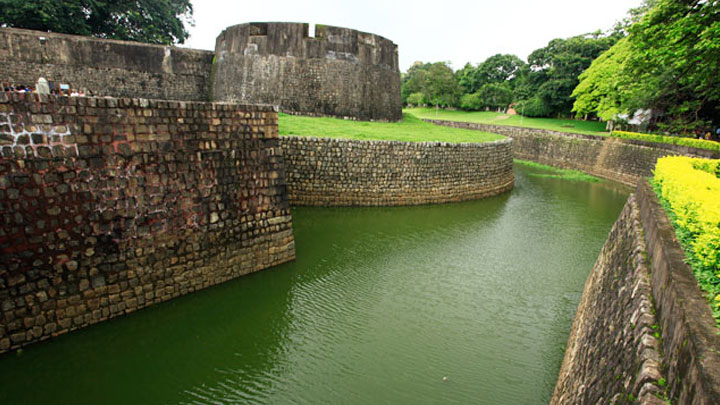
After a few years, it was captured by the Samuthiri aided by English East India Company and later recaptured by the forces of Mysore. Tipu Sultan is believed to have camped here and held official discussions on the progress of the war and the administration of Malabar
Kottappuram Fort, Thrissur
The Kottapuram Fort (aka Kodungallur or Cranganore Fort) built on the banks of the River Periyar in the south-eastern corner of Kodungallur town was located in a very strategic position, considering that maritime trade was at its zenith at the time. The Periyar River flows down from the Western Ghats into the Arabian Sea.
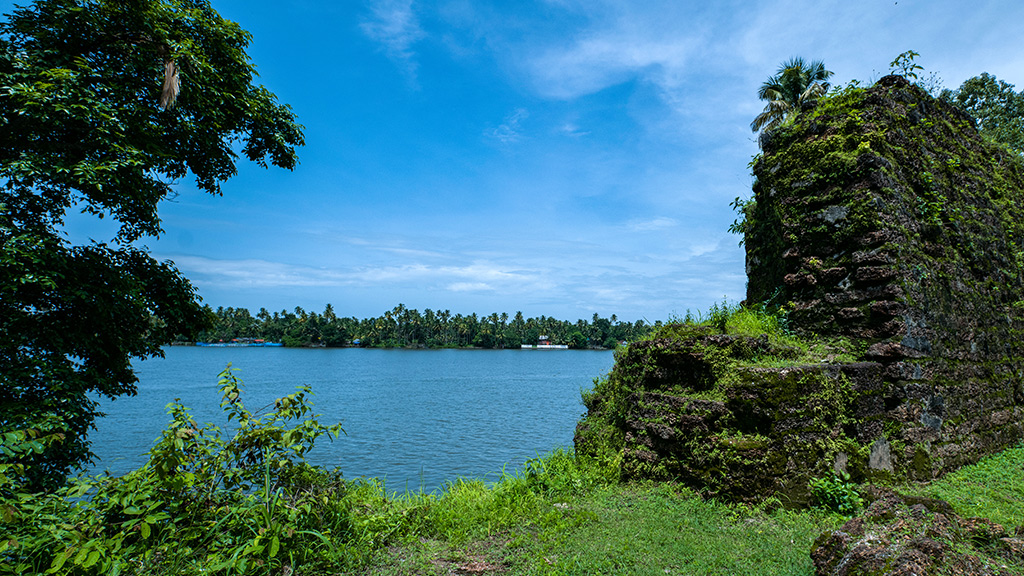
A branch of the river heads south and meets the lake near Kochi, while another branch turns north near the fort and flows towards the Malabar area. The presence of an estuary where the river joins the sea makes it highly convenient for small vessels and large boats to load and unload goods from ships waiting out in the deep sea. The Portuguese had thus built the fort strategically to safeguard their maritime trade activities and protect their ally, the king of Kochi.
Chettuva fort, Thrissur
The only fort constructed by Dutch East India Company in Kerala, between 1714 CE and 1718 CE, Fort William (locally known as Chettuva Fort), is ensconced in a picturesque spot on the banks of the River Chettuva that flows to the sea on the west – surrounded by abundant coconut trees, mangroves, and marshy land. Spanning an area of about five acres, the fort is built entirely of laterite blocks and lime mortar. A deep, wide surrounding moat connects to the canal on the western front, which used to be the main method of transportation from the fort to the seafront in Kochi. The purpose of the fort was to serve as the main line of defence for the king of Kochi, who was an ally of the Dutch, to resist all advances of the Samuthiri, whose province then extended till the northern bank of the river. Crossing over through the canal was rather easy, and during the construction, the Samuthiri is believed to have captured the fort once and retained it until 1718 CE, when the Dutch finally recaptured it and completed the fort.
Today, the remains of the Chettuva Fort are protected by the Department of Archaeology.
Pallipuram Fort, Ernakulam
In the island of Vypin, by the western bank of the River Periyar cascading down to the Vembanad Lake, is the centuries-old Pallipuram Fort, shaped uniquely like a hexagon. Built by the Portuguese in 1507 CE, captured by the Dutch in 1661 CE, and later sold to the kingdom of Travancore in 1789 CE, it is one of the oldest existing European fort in India. Popularly known as Ayakkotta’ due to its proximity to Azhikkode, the fort has a single entry on the eastern side.
Thiruvananthapuram Fort
The Thiruvananthapuram Fort, built around the 18th century to protect the revered Padmanabhaswamy Temple at its centre, has transformed with the passage of time – to integrate stronger fortifications, contemporary gateways, and restorations to suit the generational druthers of royalty and the changing geo-socio-political scenarios of varied periods in history. The capital city is believed to have developed organically around the celebrated temple, which in the early days was protected by a ‘mathil’ (mud wall or fort), assigning the area the moniker ‘Mathilakom’, literally meaning ‘inside the wall’.
